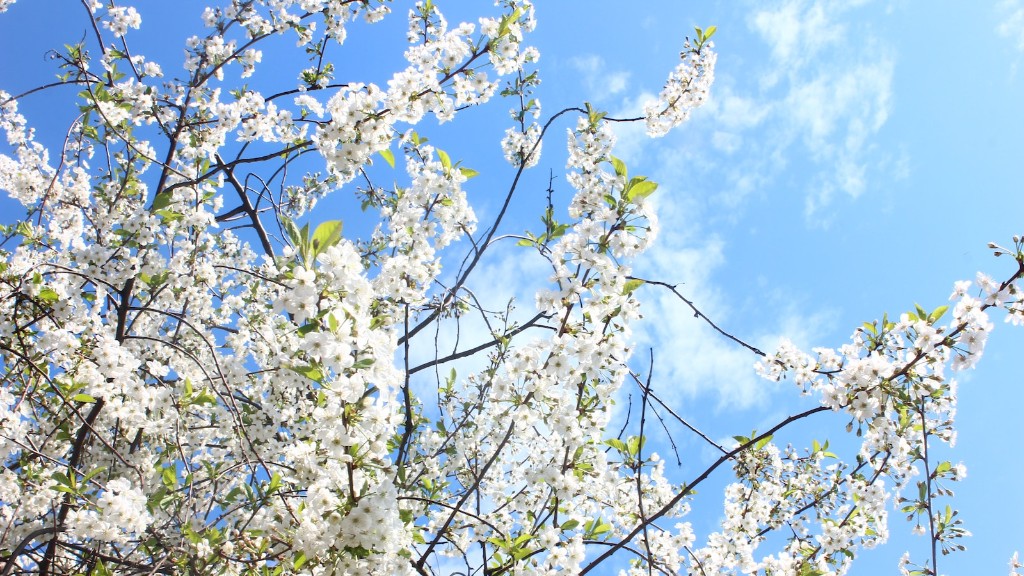Pruning a fuji apple tree is an important step in ensuring healthy growth, encourages fruit production and can help maintain the shape of the tree. It’s essential to prune a fuji apple tree to promote flowers and fruits, as well as to increase air circulation. The key to proper pruning is to know when and how to prune properly. Here’s how to prune a fuji apple tree correctly.
First, it’s important to understand when to prune a fuji apple tree. In order to have the best results, pruning should occur in mid- to late-winter when the tree is dormant. This gives the tree a chance to heal without having to produce new growth.
Second, it’s critical to use the correct pruning tools. Pruning shears are generally the best tool for pruning trees. Make sure to use high-quality shears to ensure that the tree is pruned properly and that no damage is done to the tree.
Third, it’s important to prune dead or diseased branches. Pruning any dead or diseased branches will help ensure the health of the tree. Prune any branches that are crossing or rubbing against each other and any branches that are growing too close to each other.
Fourth, make sure to remove any suckers. Suckers are the small branches that grow in between the trunk and the main branch. Suckers rob the tree of energy, so it’s important to remove them.
Fifth, it’s important to remember to prune with a goal in mind. Pruning should be done to encourage the desired shape of the tree, to promote fruiting, and to remove any disease or deadwood. An expert pruner can ensure that the tree is pruned according to the desired goals.
Lastly, it is important to never prune more than one third of the canopy of the tree. Pruning too much of the canopy can put undue stress on the tree and make it more susceptible to disease and pests. As a rule of thumb, prune no more than one third of the canopy of the tree.
Pruning Young Trees
When pruning young trees, it is important to remember that pruning too much too soon can stunt the growth of the tree. Young trees should be pruned with the aim of shaping the tree, removing dangerous or damaged branches, and removing dead or diseased branches. Prune any branches that are too close to the trunk, as well as any crossing or rubbing branches. Make sure not to prune too far from the trunk as this can cause damage to the tree.
Young trees should be pruned on an annual basis in late winter. Prune only the branches that are necessary for proper maintenance and trimming of the tree. Prune when the tree is dormant and avoid pruning from late spring through mid-summer as this could damage the tree.
Pruning young trees correctly can help ensure that they have the best possible chance at living and thriving. Be patient with young trees and remember to use the right tools. Never prune more than one third of the canopy of the tree in any one year.
Pruning Old Trees
Pruning old trees is more complex than pruning young trees. When pruning mature trees it is important to remember that less is more. Prune only what is necessary to keep the tree healthy and shape it. Prune any dead or diseased branches, as well as any crossing or rubbing branches.
Old trees should also be pruned on an annual basis in late winter, when the trees are dormant. Prunning too much at one time can damage the tree, so it is important to practice caution when pruning old trees. Never prune more than one third of the canopy of the tree in any one year.
Pruning old trees can be challenging and should be left to a certified arborist or a professional pruner with plenty of experience. An expert pruner will know how to prune the tree safely and effectively to ensure that the tree lives and thrives.
Pruning Apple Trees
Pruning apple trees is much the same as pruning other types of trees, with a few additional considerations. When pruning apple trees, it is important to remember to remove any suckers that form near the trunk or between the main branches. These suckers will not only rob the tree of energy, but they can also lead to the bark becoming too thick, which can be damaging.
Apple trees should also be pruned on an annual basis, in late winter when the trees are dormant. Pruning any dead or diseased branches should also be done, along with removing any crossing or rubbing branches. Pruning should also be done to maintain the desired shape of the tree and promote fruiting.
It is also important to remember to never prune more than one third of the canopy in any one year. Pruning too much of the tree can damage it, so it is important to practice caution when pruning apple trees. An expert arborist or pruner should be consulted if there are questions or concerns.
Pruning Tips
When pruning any type of tree, it is important to remember to use the right tools. Pruning shears are generally the best tool for pruning trees. High-quality shears will help ensure the proper pruning of the tree. Avoid pruning too much of the canopy in any one year, as this can damage the tree.
It is also important to wear protective gear when pruning trees. Long sleeves, gloves, and eye protection should always be worn to prevent injury. Pruning can be dangerous, so it is important to take the necessary safety precautions.
Finally, it is important to never prune for aesthetic purposes only. Pruning should only be done to promote the health of the tree and to ensure fruiting. Never prune a tree solely for the purpose of shaping it, as this can damage the tree and make it more susceptible to pests and disease.

